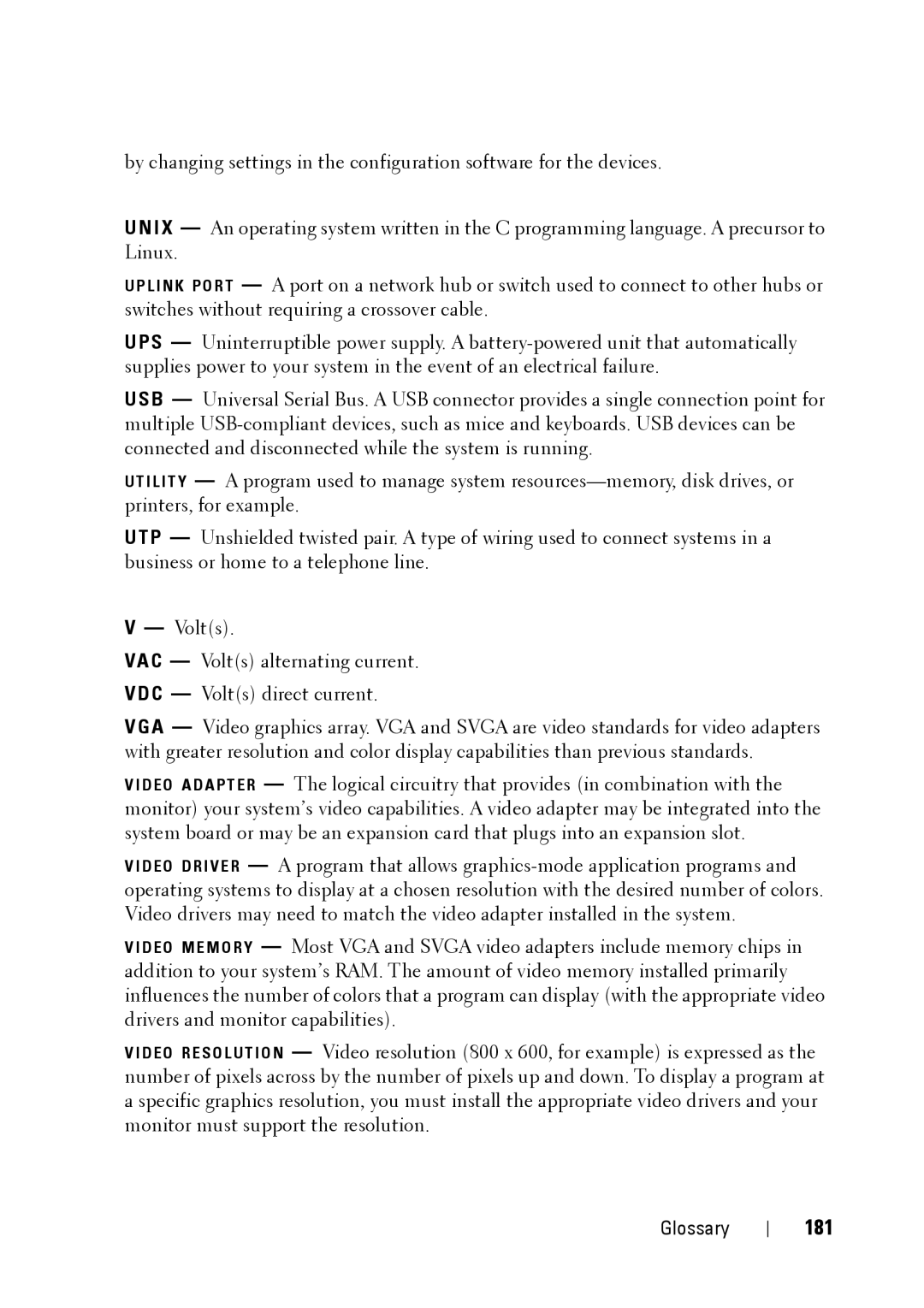by changing settings in the configuration software for the devices.
U N I X — An operating system written in the C programming language. A precursor to Linux.
U P L I N K P O R T — A port on a network hub or switch used to connect to other hubs or switches without requiring a crossover cable.
UPS — Uninterruptible power supply. A
USB — Universal Serial Bus. A USB connector provides a single connection point for multiple
U T I L I T Y — A program used to manage system
UTP — Unshielded twisted pair. A type of wiring used to connect systems in a business or home to a telephone line.
V — Volt(s).
VAC — Volt(s) alternating current. VDC — Volt(s) direct current.
VGA — Video graphics array. VGA and SVGA are video standards for video adapters with greater resolution and color display capabilities than previous standards.
V I D E O A D A P T E R — The logical circuitry that provides (in combination with the monitor) your system’s video capabilities. A video adapter may be integrated into the system board or may be an expansion card that plugs into an expansion slot.
V I D E O D R I V E R — A program that allows
V I D E O M E M O R Y — Most VGA and SVGA video adapters include memory chips in addition to your system’s RAM. The amount of video memory installed primarily influences the number of colors that a program can display (with the appropriate video drivers and monitor capabilities).
V I D E O R E S O L U T I O N — Video resolution (800 x 600, for example) is expressed as the number of pixels across by the number of pixels up and down. To display a program at a specific graphics resolution, you must install the appropriate video drivers and your monitor must support the resolution.
Glossary
